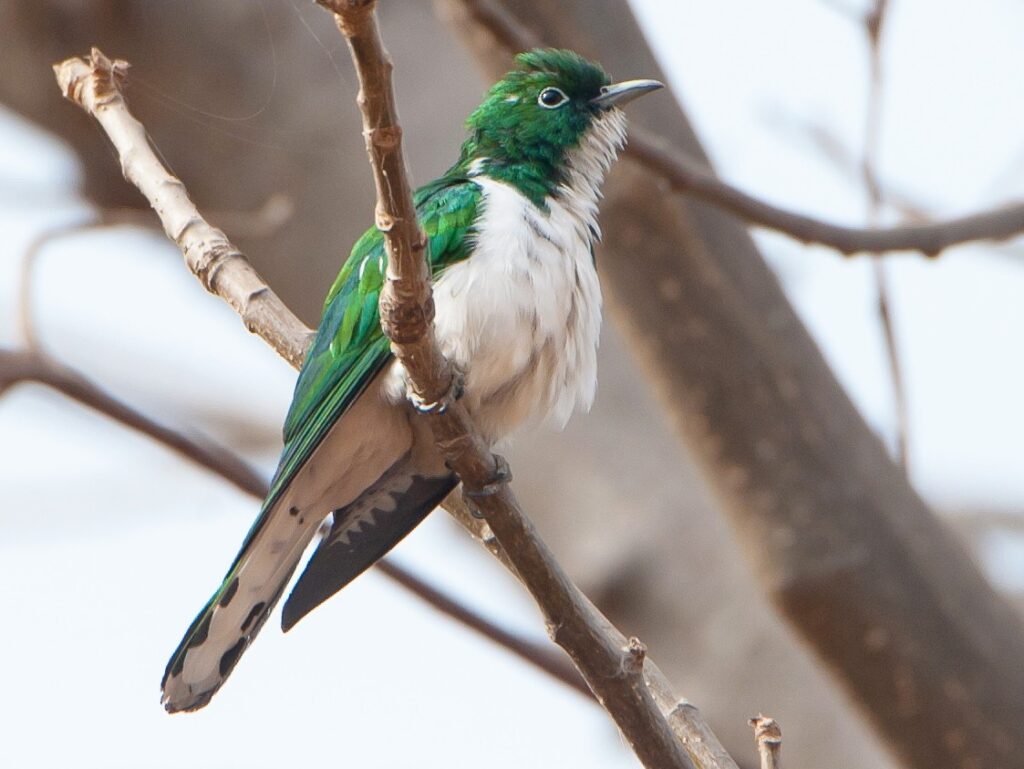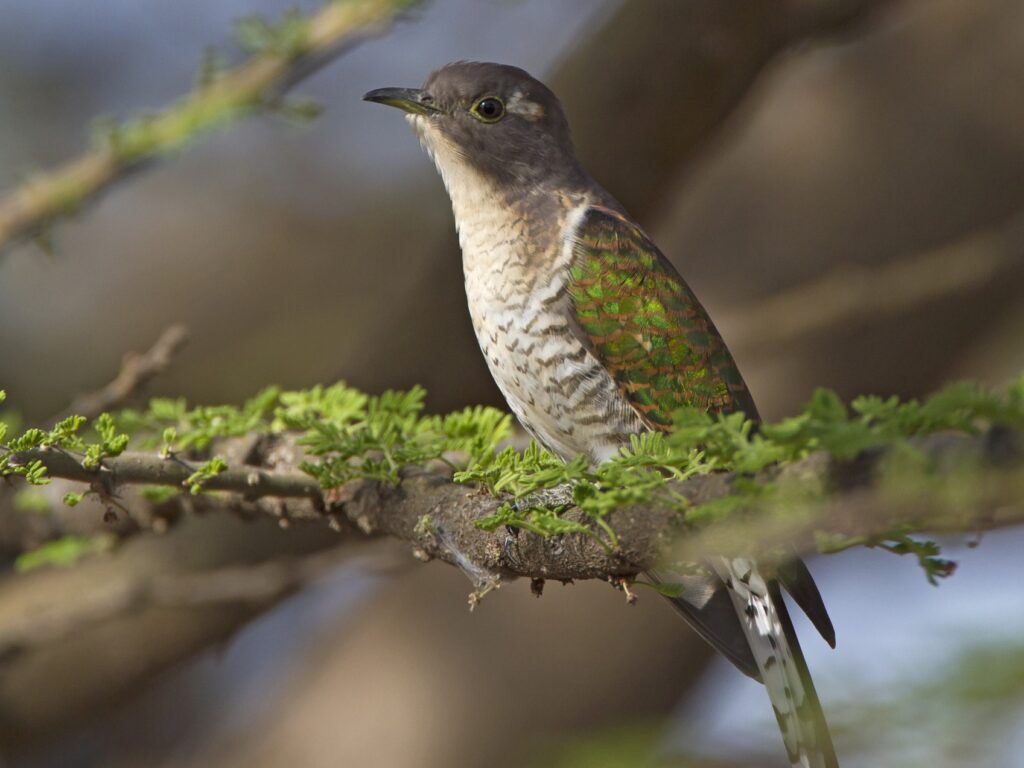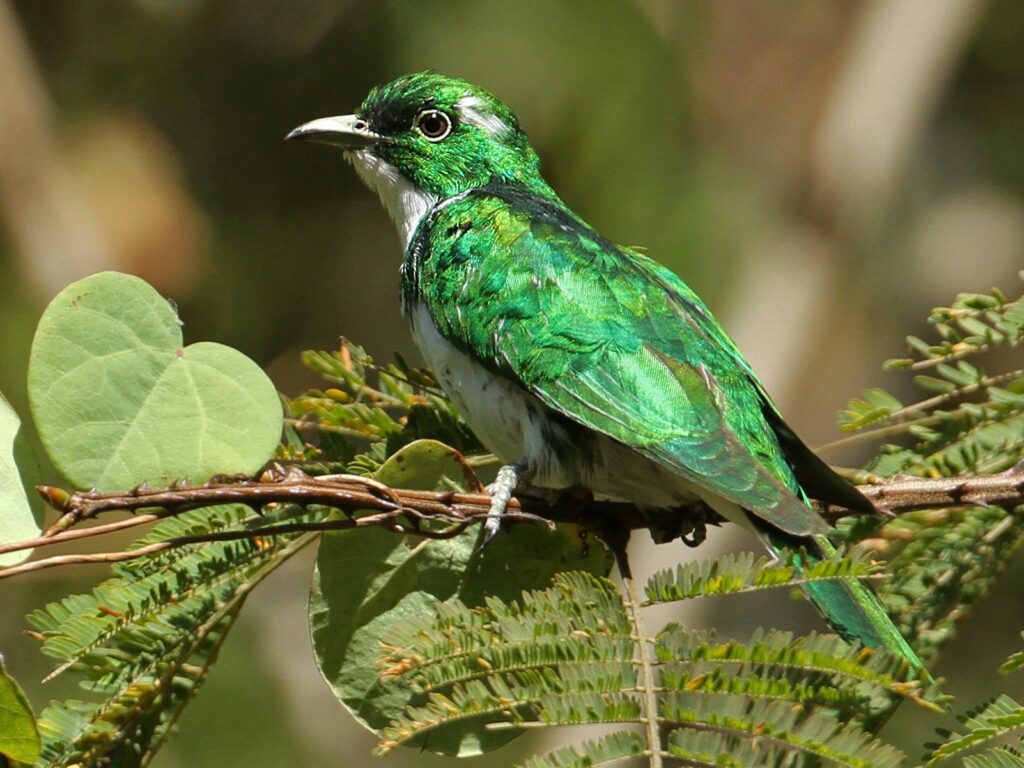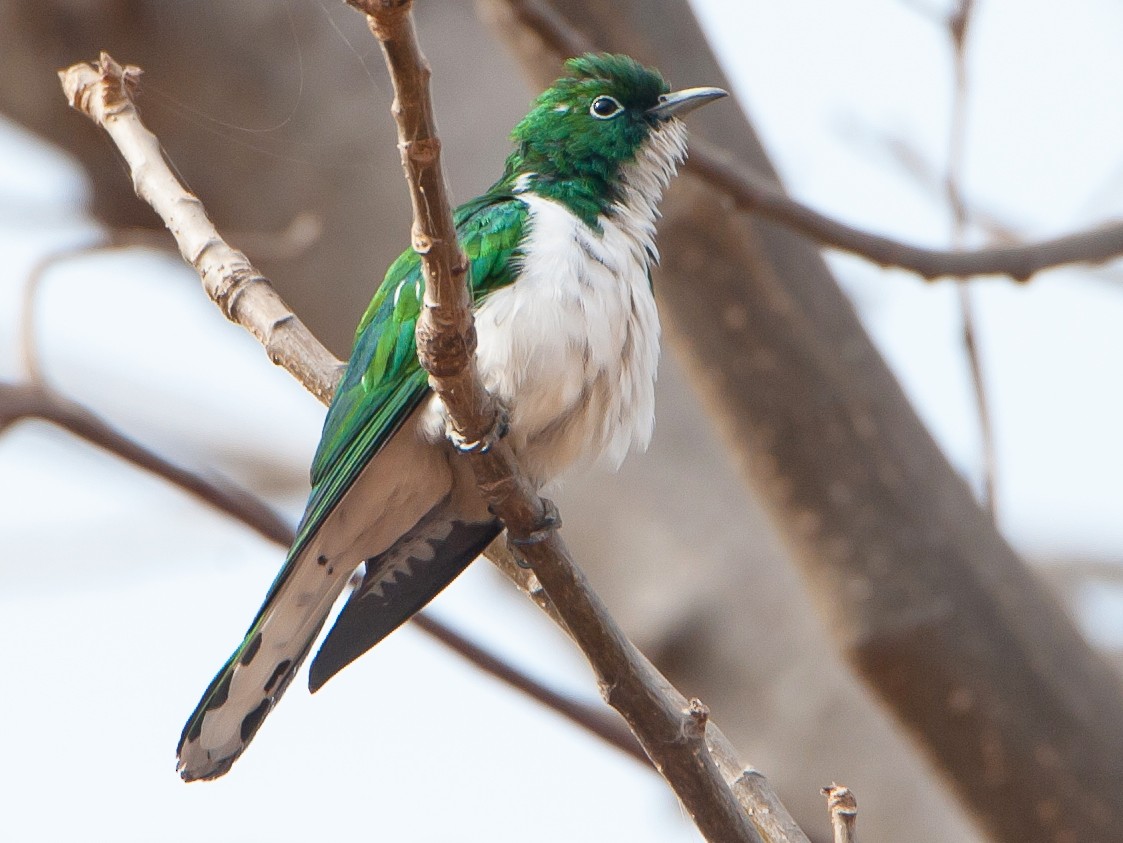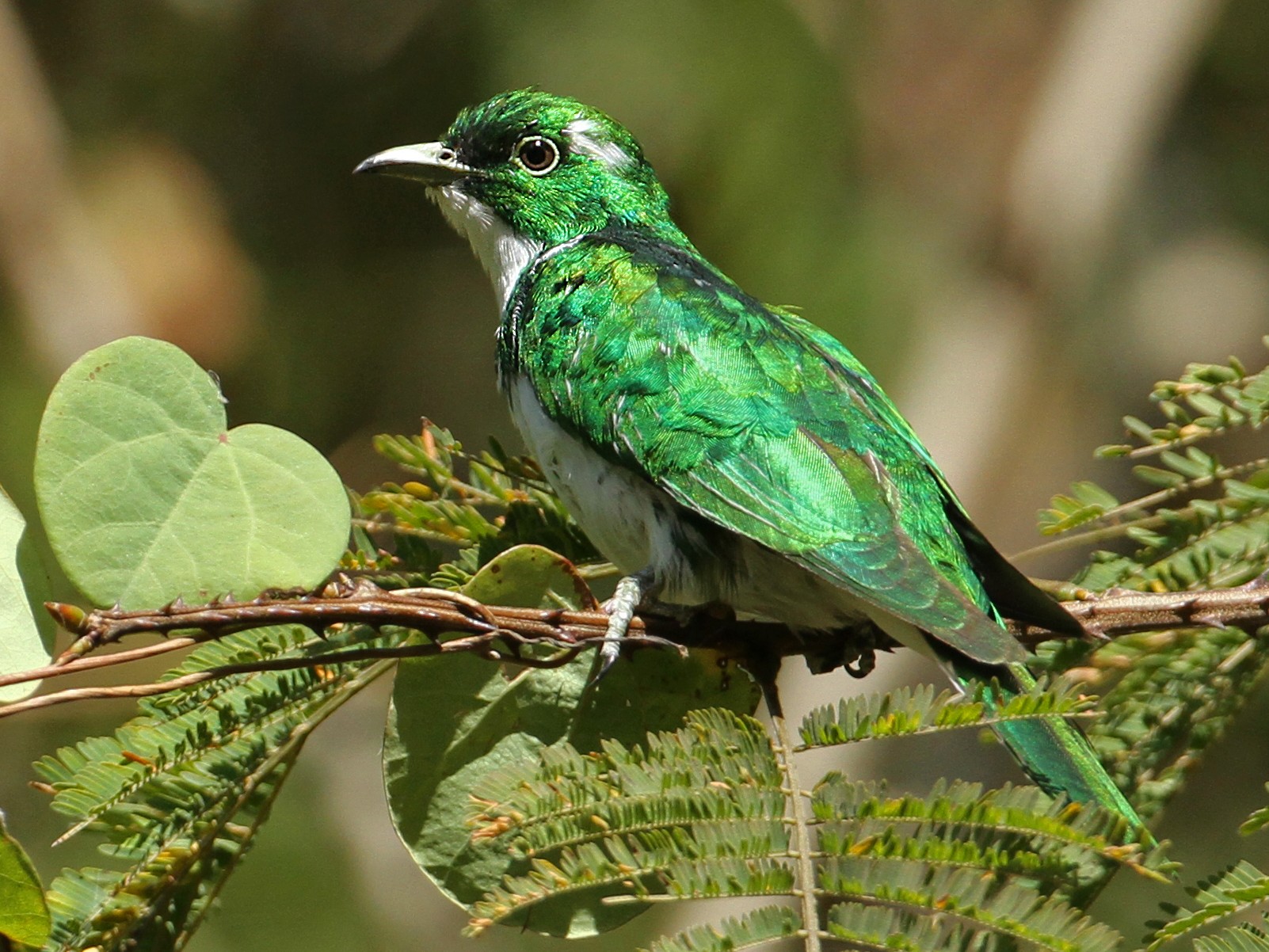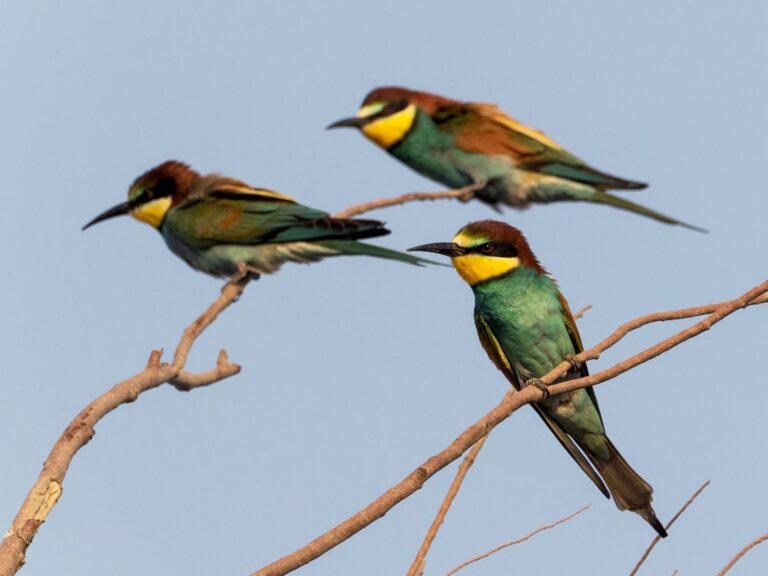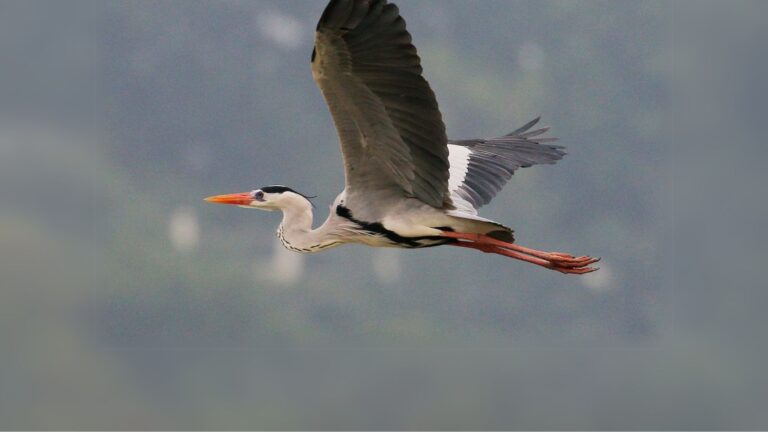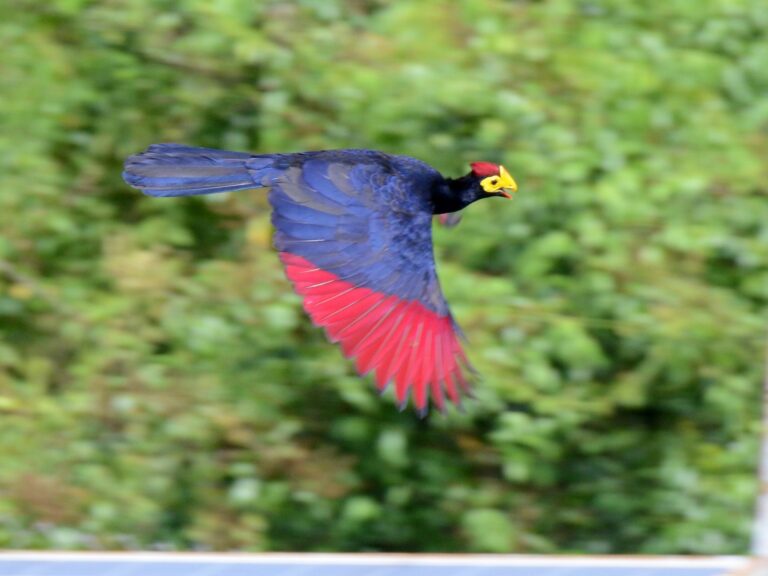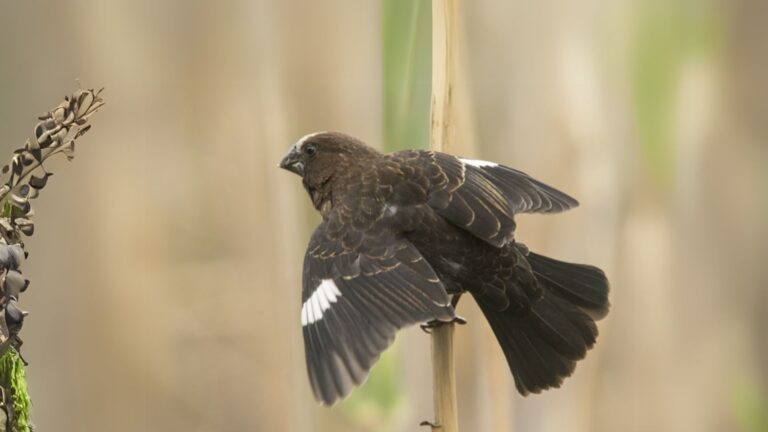Klaas’s Cuckoo: The Intriguing Life Cycle of a Master Nest Invader
The Klaas’s Cuckoo is a really fascinating bird with some pretty unique reproductive habits and a beautifully striking look. This species is famous for brood parasitism—it sneaks its eggs into other birds’ nests, creating some wild ecological drama.
You’ll spot these cuckoos in the grasslands and woodlands of southern Africa and they seem to favor certain habitats and thrive there. The male Klaas’s Cuckoo flashes vibrant green and golden plumage, so it’s tough to miss. These birds aren’t just eye candy; they actually shape the ecosystem, nudging their host species into all sorts of new behaviors.
It’s a neat example of how nature’s balance can get complicated fast. The relationship between Klaas’s Cuckoo and its hosts is a little like a dance—sometimes elegant, and often, more than a bit sneaky. It also pops up in cultural stories and folklore. Their calls and quirky antics have captured the attention of birdwatchers and nature lovers for ages.
Key Takeaways
- Klaas’s Cuckoo lays eggs in other birds’ nests—classic brood parasitism.
- The male sports those unmistakable green and gold feathers.
- This species turns heads for both ecological and cultural reasons.
Scientists have given Klaas’s Cuckoo a pretty specific spot in the bird family tree. The story behind its name is actually kind of interesting, too.
Scientific Classification
The scientific name is Chrysococcyx klaas. It’s in the Cuculidae family, so it’s related to other cuckoos and even roadrunners. Chrysococcyx comes from Greek—“chrysos” for gold and “kokkyx” for cuckoo. That’s a pretty literal name if you ask me.
François Le Vaillant described the species back in 1805. That puts it in the same group as Dideric and African Emerald Cuckoos. Its glossy feathers and unique call set it apart from its cousins. You can usually tell it’s a Klaas’s just by the way it looks and sounds.
Origin of the Name
The name “Klaas’s Cuckoo” is a nod to François Le Vaillant, who did a lot of early bird research in Southern Africa. The “Klaas” part? It’s a Dutch nickname, a kind of informal tribute. So, the name ties back to European exploration and the whole tradition of naming birds after people. Ornithology has a lot of these little quirks.
Notable Historical Figures
François Le Vaillant and James Francis Stephens both left their mark on the history of this bird. Le Vaillant’s fieldwork in the late 1700s was a big deal for African bird studies.
Stephens, another ornithologist, helped sort out the names and categories in the early 1800s. Their efforts shaped how we see Klaas’s Cuckoo today. If you want to go deeper, check out this study for more on the taxonomy and history.
Physical Characteristics
Klaas’s Cuckoo stands out with its bold colors and patterns. These features help it blend in—or stand out—depending on the situation. It’s handy for birders and researchers to know the differences between males and females. Otherwise, you might mix them up in the field.
Plumage and Coloration
The adult male’s back glows with a glossy, greenish-black sheen. Underneath, he’s much lighter—sometimes white or gray. The female looks more understated. Her back is brownish or reddish, and her chest is paler, which helps her stay hidden.
Long, pointed wings give them some serious aerial skills. The yellow eyes and sturdy bill add to their dramatic look.
Differences Between Male and Female
You’ll notice sexual dimorphism right away: males are brighter, with shiny feathers and strong contrasts between top and bottom. Females, meanwhile, are more uniformly colored. That’s a pretty good strategy for staying out of sight during nesting. The males also call louder and with more flair, which helps them attract mates. These differences shape their courtship rituals.
Distinguishing Features of Adults
Adults have a strong, curved bill—perfect for nabbing insects and caterpillars. That bill is pretty unmistakable if you get a close look. In flight, you’ll see a long tail that helps them turn on a dime. That’s a good field mark if you’re watching from afar.
Those bold yellow eyes really pop against their feathers. It’s another easy way to spot them. Knowing these traits makes identification much easier. If you’re curious about their genetics or behavior, there are some cool studies out there worth digging into.
Distribution and Preferred Habitats
Klaas’s Cuckoo pops up in some pretty specific parts of Africa. Here’s where you’re most likely to find one.
Geographic Range
This bird hangs out mostly in sub-Saharan Africa, from Senegal to Kenya. It likes areas with a mix of open woods and thick shrubs. On the southern edge of its range, you’ll find it in different climates and elevations and it adapts pretty well, to be honest. Habitat changes have shifted its distribution a bit, but it still manages to find good spots. They’re pretty resilient that way.
Woodland and Forest Environments
Klaas’s Cuckoo really thrives in woodlands and forests. It wants lots of cover and plenty of bugs to eat. Look for them in acacia woodlands, savannahs, or moist forests—anywhere with dense foliage. That’s where they nest and hunt.
They’re clever about using their environment. Laying eggs in other birds’ nests is classic cuckoo behavior, after all.
Notable Locations
If you’re birdwatching in Senegal, check out parks and reserves with lots of trees. Those are hotspots for Klaas’s Cuckoo. In Kenya, the Masai Mara and the nearby woodlands are prime territory. Migration season brings even more sightings. Southern Africa has its own important habitats, too. The species adapts to a surprising range of environments.
Behavior and Ecology
Klaas’s Cuckoo has some wild behaviors, especially when it comes to eating and dealing with other species. It’s not your average backyard bird.
Feeding Habits
This cuckoo mainly goes after insect larvae—caterpillars are a favorite. Juvenile butterflies and beetles are also on the menu. You’ll often find it foraging near flowering plants, poking around for snacks. Its diet shifts with the seasons, depending on what’s around. Sometimes, it even sips nectar from flowers. That’s a neat trick for a bird mostly known for eating bugs.
Interaction With Other Species
Klaas’s Cuckoo skips the hard work of parenting by laying its eggs in sunbirds’ nests. That way, someone else feeds its chicks. The cuckoo chick usually ends up outcompeting the real chicks for food. Not exactly fair, but that’s nature for you.
These interactions stress out the host parents, who end up feeding an extra, demanding mouth. The cuckoo chick even acts like the host’s own babies to get more food. This whole setup shakes up the local ecosystem. The cuckoo’s presence changes the host birds’ lives and even affects insect populations nearby.
Cultural and Regional Significance
Klaas’s Cuckoo isn’t just a bird—it’s part of the culture in southern Africa. People have woven its quirks into stories and beliefs.
Local Names and Folklore
Locals in South Africa often call it “Meitjie.” That name shows how close the bird is to daily life there. Folklore says the cuckoo’s arrival signals a change in season, especially when the rains are coming. Its sneaky nesting habits have inspired plenty of tales, too. People respect the bird for its role in both nature and tradition. If you want more on its cultural side, check out this article.
Frequently Asked Questions
Klaas’s cuckoo is one of those birds that gets people asking questions. Its looks, calls, and odd breeding habits keep birders guessing.
What are the distinguishing features of the Klaas’s cuckoo compared to other cuckoos?
Klaas’s cuckoo stands out with its bright green back and pale underbelly. It also has black-and-white markings on its wings. It’s smaller than most other cuckoos, which makes size a good clue, too.
How does the Klaas’s cuckoo mating call differ from other cuckoo species?
The call is a sharp, repeated “klaas”—that’s actually where the name comes from. It’s more melodic than the usual monotone of other cuckoos. You’ll hear it a lot during the breeding season. If you’re in the right place at the right time, it’s hard to miss.
What species are typically parasitized by the Klaas’s cuckoo?
Klaas’s cuckoo usually goes after weaver birds as its main hosts. It lays eggs in their nests, often picking nests with eggs bigger than its own. Sometimes, other small birds get targeted too. This sneaky breeding tactic isn’t exclusive to just one species.
In what type of habitat can the Klaas’s cuckoo commonly be found?
You’ll spot Klaas’s cuckoo in wooded areas and open grasslands. It sticks close to water sources, since that’s where its hosts like to hang out. It pops up more often in southern Africa. Tall trees make these spots extra appealing for nesting.
What does the female Klaas’s cuckoo look like and how does it differ from the male?
The female Klaas’s cuckoo doesn’t show off as much color as the male. She’s got a browner tone and her markings are way less flashy. This muted look gives her a bit of camouflage. Honestly, it probably helps her stay safe while nesting.
How does the Klaas’s cuckoo’s breeding behavior compare to other members of the cuckoo family?
Klaas’s cuckoo lays its eggs in the nests of other birds. That’s classic brood-parasitic behavior.
Instead of helping raise their own chicks, Klaas’s cuckoo leaves the job entirely to the host parents. The hosts end up feeding and caring for the young cuckoo as if it were their own.
Most cuckoos use this strategy, though the details can differ a lot between species. Some get pretty creative with it, honestly.

